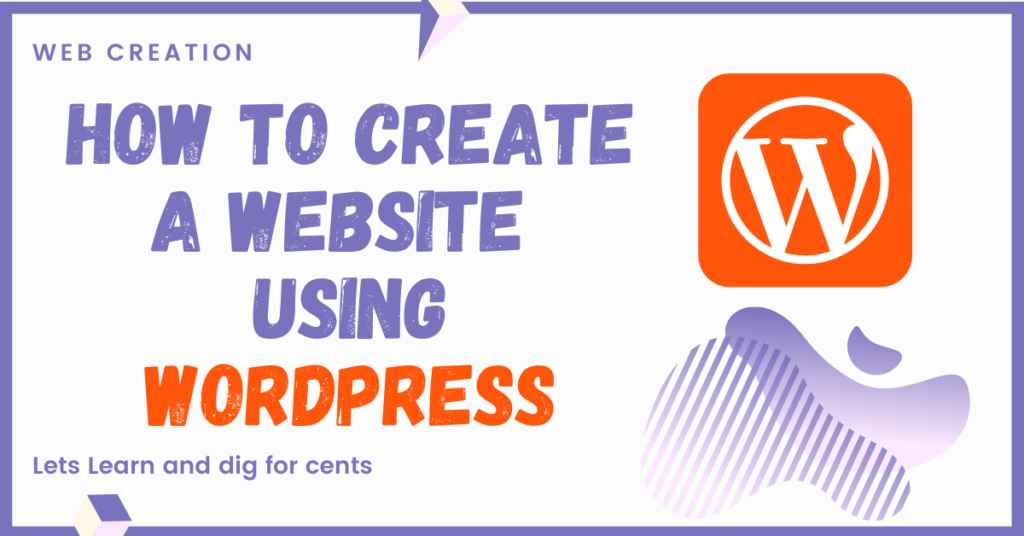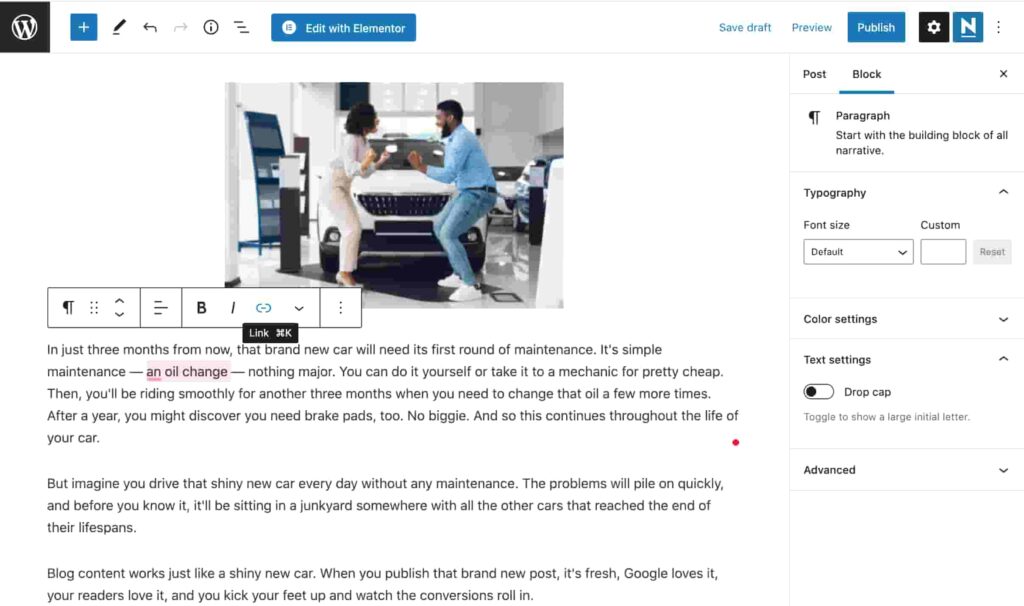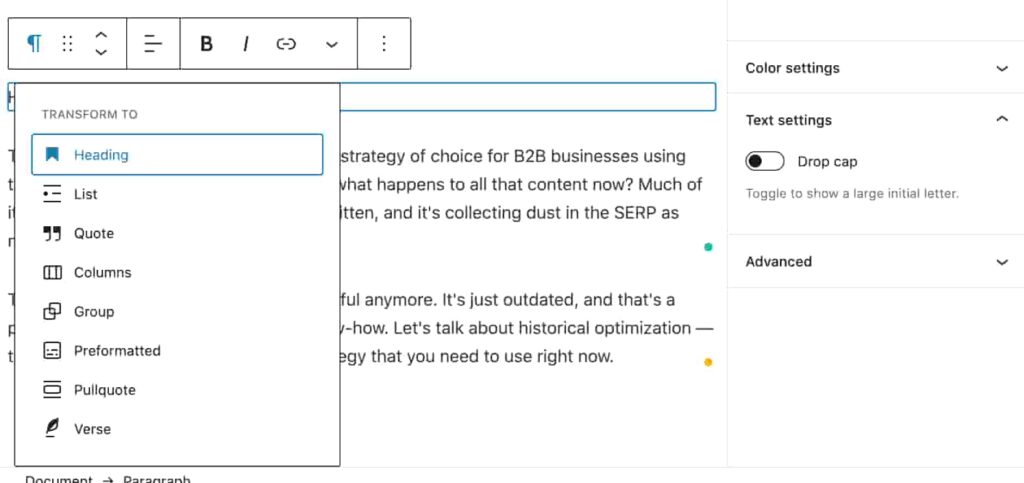Note: This article contains affiliate links. If you subscribe to a paid account after clicking on one of the links in this article, DigForCent.com team will receive a small commission. You can also donate to our team from
HERE
thanks
Driven by the success stories of big companies like Uber and Facebook, Samuel has decided to start a business of his own. However, during the Covid-19 Pandemic, he has found it really difficult to run his business dealings in a brick-and-mortar shop.
Given the current situation, Samuel has decided to take his business online so that he can reach people easily. He has studied how he can create a website for himself. Interestingly, he is surprised to see that only a few simple steps will suffice to create one website for himself. He does not need any knowledge about coding, etc.
He has learnt that there are two ways to create a website. Firstly, by using the wizard of Website Builder and secondly by creating the website with WordPress.
Samuel has decided to go with the latter because it has incredible in-built features besides being user-friendly. He has heard about WordPress before but never thought of using it to create a website.
This step-by-step guide is designed for the likes of Samuel, who are beginners in this field. The guide will highlight different stages, like selecting a domain name, hosting and customizing WordPress to create a unique website.
What is WordPress and why choose it?
WordPress began its journey in 2003. Technically speaking, WordPress is a content management system (CMS) written in PHP. It uses a MySQL database. In other words, you can use WordPress as a software to create and modify a website.
WordPress has become a well-liked tool because different websites can be built by using it without any hassle. For instance, blog, portfolio website, membership website, forum, event and e-learning website. Furthermore, you can launch your eCommerce store and business website with the support of WordPress. The plugins are fantastic and highly beneficial.
Create a custom website using WordPress effortlessly
To save time and create the WordPress site that suits you effortlessly, entrust its creation to a professional, post your project on DigForCent.com to receive free quotes in minutes.
Anyone learning how to start a blog from scratch worries a lot. There are selections regarding domain registration, hosting, theme design, social buttons, contact pages that could make or break your website.
Before creating a website using wordPress
1. Buy a domain name and a server for your site
Choose your domain name
The beginners are seen to make a blunder at the initial stage. Most of them usually come up with names that are difficult to remember.
Besides, the domain names do not go with their brand and business. With literally hundreds of domain extensions (like .com, .club, or .ink) available. You can pick anything. However, I have compiled to provide the best advice for those who are endeavoring to come up with the perfect blog domain name.
ℹ
It is better to choose a synthetic domain name so that Internet users remember it better.
7 Tips for picking the perfect blog domain name
Tip 1: Pick a simple domain name
The use of simple and known words as a domain name is the first trick. Using phrases that are hard to remember can make your efforts go in vain. Simple names can help you in several ways. The length of the domain name also matters. Keep it as short as possible. Sometimes it is seen that the extensions create a problem. If ‘the.com’ of your domain is already booked, go with a different extension. It can be a traditional extension, like ‘org’ or more creative ones, like ‘Club’.
You can keep the domain name straightforward. If you find “mangoslice.com” is already taken, try “MangoSliceRecipes.com” instead.
Tip 2: Pick memorable domain name
If people can say and recall your blog’s domain name, it is good for your blog’s growth. For example, if your brand is MangoSlice but your domain is TheMangoSliceFoodBlogofRecipes.com, it’s going to be next to be a difficult task for peopleto remember or read such a complicated domain.
Tip 3: Pick a domain that matches your voice.
Adding creativity and flare will make you stand out. For example, you could use the ‘.ink’ domain extension. The domain name can be TheMissingL.ink.
Pick a domain that represents your voice. Your blog represents your thoughts, ideas and opinions. As a professional writer, you can highlight your creativity in your domain name. It should represent your voice. It is not applicable for eCommerce sites, portfolio sites, landing pages, saas sites, or simple resumé sites.
Domain name creates the first impression and should complement the blogs.
For example, if you write about the digital marketing niche, the domain name might have the word digital marketing in it. Again, if you are writing about serious topics like politics or climate change, a playful, creative, cute blog domain will be a complete misalliance. The domain name should match your voice or mission.
Tip 4: Pick a unique domain name
Over 2 million blog posts are published on the web every day. It is difficult to get the attention of the readers or traffic for your website. A unique domain name can take you a long way. A unique name sparks curiosity in the minds of the viewers. Not the name alone, the content has to be original. If you can personalize your style voice and brand you can remain assured that your website will perform better in rankings.
Avoid strange spellings or play on words. You can generate combinations (like Gyoby) or use one of the hundreds of domain extensions. I said previously to come up with phrases like GuyOnA.Bike for a blog all about your adventures in cycling.
Tip 5: Pick a versatile domain
It is seen that a good number of bloggers change and adapt the content based on what the readers enjoy reading. Their reaction is a true game-changer.
Tip 6: Pick a domain that avoids hyphens.
Many, who are new, do not have a clear idea about the use of hyphenation. They must know that the use of hyphens in domain names may create frustration. Most people get it wrong. You can use ‘The’ at the beginning of the domain name. Orange-Peel.com then becomes TheOrangePeel.com which is much stronger visually.
Tip 7: Pick a domain that’s also available on social media.
Ensure that your brand is available on the primary social media platforms. It will enhance brand awareness and make you more consistent with your posts.
ℹ
While changing the URL to your lifestyle blog later isn’t impossible, it can be quite difficult, so you’ll want to make sure you pick a name you really like.
Once you’ve got a few ideas (it’s always good to have a backup or variation on your favorite in case it’s not available) you’ll want to check if your domain name is available
Here’s a handy little checker to test your domain names in.
check your domain availability bellow:
If it’s available, click “Next”
In the domain checker above, you’ll see whether your lifestyle blog domain is available or already taken. If it’s available, click “Next” (and congrats!!).
Choose your host
After having selected the name for your domain, you have to choose a host for your website. You can choose either the shared server or the dedicated server.
As a beginner, you might not opt for hosting services that provide technical expertise. Rather consider using a hosting provider with a status for offering great support. You can choose your web hosting depending on the expected amount of traffic as well. They might provide professional-level support for a higher price.
There are several web hosting service providers available in the market. I recommend using Bluehost to host your blog (See full Bluehost review).
The process is easy to follow. In Bluehost, after your domain being verified you will be taken to a page where you have to sign up to register your domain and buy hosting.
The page will look like this:
Put in your personal account information and scroll down the page.
Next, pick the package you want. When just beginning to learn how to create a website using wordpress, I recommend you go with the 12-month price. You can always change this later.
Before letting you check-out, Bluehost will try to upsell you on a bunch of extra add-ons. In reality, you don’t actually need most of them right now if you’re just testing the waters as a lifestyle blogger.
You can also change these settings later and pay the extra costs each month. I recommend you start with the most basic and upgrade later. The only thing you really need at this stage is “Domain Privacy Protection”.
Your screen should look like this:
Why keep Domain Privacy Protection? Here’s why this is important: by law, you have to have a public email and phone number for your lifestyle blog (or any website).
In order to keep spammers at bay, Bluehost will cloak your email and phone behind one of their own. It’s worth every single penny of the $0.99/mo. you’ll need to pay for it.
Uncheck the remaining upgrades and continue on.
All that’s left now in setting up your lifestyle blog is to input your payment information including your credit card number, CVV/CVC code (usually on the back of the card) and the expiration date.
Then just review and agree to Bluehost’s terms and click “submit”
This will register your blog domain, connect your email and credit card to your domain and account and finalize everything.
Congratulations!
You’re now the proud new owner of an awesome domain name and you’re all set up to continue learning how to create a website using wordpress. Let’s keep going!
2. Install WordPress
If you’ve investigated how to start a your own blog before, you’ve probably seen a variety of recommendations for something called a “content management system”
All that means is the platform your site will use to allow you to publish your content, photos, videos, and other media.
The CMS I recommend when getting started as a lifestyle blogger is WordPress.
Lucky for you, Bluehost (which you signed up for above if you’re following this tutorial) has a very simple WordPress installation for lifestyle bloggers. There are also lots of other WordPress Hosts out there if you’d rather explore them instead. But this tutorial is for Bluehost hosting specifically.
Set your Bluehost password and you’re all set. You’ve completed the first step to creating your WordPress blog using Bluehost and you’re ready to start designing your site.
The time has finally come! You’re ready to start your WordPress blog and you can do it right from your Bluehost account.
The first thing you’ll do is log in to your Bluehost account.
Before taking you to your dashboard, Bluehost will collect a few more details (Blog name…) from you in order to successfully finish setting up your blog WordPress installation.
3. Pick a blog design
Designing a lifestyle blog with WordPress is fun indeed. WordPress has got thousands of themes for its users. Again, some of the themes are paid and others are free.
Install a new theme by clicking ‘Appearance’. Then go to ‘Themes’, and finally ‘Add New’. This will take you to the theme directory. Select any theme from there.
Most of the users of WordPress are satisfied by using the themes. You can experiment with font styles and color scheme. There is an option for blog archives. Moreover, like MS Word you can change Page layouts (or templates). You can add widgets.
While designing the blog you have to keep in mind the user experience. Sometimes the user experience is affected by several factors. One of them is the design and its navigation. Other factors include the blog’s loading speed, and whether or not the blog is optimized for mobile devices, etc. Users should easily navigate from one post to another. At times you can reduce the size of your images. Ensure that the design you implement works well on the mobile platform via a responsive mode feature.
ℹ
If you need customize your theme it is necessary to consult the theme owner website

4. Create a Blogpost on WordPress
Add a New Post
To begin creating your new lifestyle blog post in WordPress, log in to your WordPress administrator area and select “Posts” from the menu options on the left. Then, select “All Posts” in the dialogue box that appears.
To add both, ‘Pages’ or ‘Posts’ the procedure is same. On the main dashboard, click the respective ‘Add New’ button, which will take you to the main editor page.
Add Content
To remain unequal among your equals in the field, you need to develop solid content. This section works like a word document. You can write freely and format your work. The posts will be saved automatically. However, click “Save Draft” button at times to be on the safe side.
Next, you’ll add your content. You can copy-paste your text directly into WordPress and add your post title.
Add a title. The advantage of blogging in WordPress is that it uses a block uses editor. It generates blocks for each section of content. For example, paragraphs will be separated into blocks as well images and headings.
Images
To add an image, you have to create a new block or section by pressing “enter” on your keyboard. Then, click the “+” button in the top left corner. You will be able to view the different blocks. Select the “Image” block.
From here, you can upload your image. You can upload images from your computer. On the other hand, WordPress Media Library is also full of images. You can select one from there. Moreover, there is an option to insert an image with a URL from a site like Flickr.
Your image should now be visible in the block.
Links
Adding both internal or external links is important to maintain the blog. There are two ways to add hyperlinks to your blog. Select the text you want to hyperlink and find the floating menu box and select the link icon highlighted in blue.
You’ll see a box appear that allows you to add a URL.
From here, you’ll be able to add your link
The second (and easier way) to add hyperlinks is by using a keyboard shortcut. Start by selecting the text you want to hyperlink.
Then, on your keyboard, press command+K (Mac) or control+K (PC) to bring up the box and add your URL.
Format the Post
Search Engine Optimization (SEO) is essential to ensure that your content is visible first on a search engine’s results page. It is important because people tend to choose the top results from a search. They will click on the link to your blog depending on your ranking in the search. As a blogger, you can easily optimize your blog with WordPress. In some cases, no expert help is required.
Headings
To organize your lifestyle blog post, you’ll want to use headings. Headings tell the reader (and the search engines) what is important on the page using a hierarchy.
Here’s how it works: An H1 is the title of a post or page and lives at the top of the hierarchy and the top of the post or page. A blog post should only have one H1 — any more and Google (and your reader) will get confused reading your post.
H2s are subheadings. You might have one, two, or more of these in your post. H2s are next in line in the hierarchy of your lifestyle blog post. They always go below an H1. H3s follow a similar order — they always go below H2s. All subsequent headings follow the same pattern.
To change a heading in a WordPress blog post, find the menu box and select the paragraph button highlighted in blue.
Select “Heading”. You’ll see your text change in size and even color, depending on the CSS settings your site has set up. To edit the type of heading, click the “H2” button in the menu box and select the appropriate heading.
Images
I have already discussed how you can add interesting images to your blog. In this section I will talk about how you can format them.
At first, select your image and find the floating menu box. There is a format button – the one with three horizontal lines. Choose the alignment for your image.
In the Image below I stick with a center alignment for the photos in your blog post.
Add Tags
Finally, you’ll have the opportunity to add tags to your post. These help readers navigate your posts by similar topics. This is optional, so you can leave them blank if you don’t yet have a process to organize tags.
Preview the Post
After doing all the formatting, WordPress gives you the option to preview the post. Thus, before making posts public you can check for any issues with the content, formatting, or user experience. “Preview” button is in the top right corner. Even you can select the platform like the desktop, tablet, or mobile version of the post.
Take a look at your post for any errors. If you see any, simply go back to the editor tab and adjust as you need to.
If everything looks good, you’re ready to publish your WordPress blog post.
Publish the Post
To publish the post, select “Publish” in the top right corner of the page. You’ll see a few different options for publishing, but if you want this post to be available to anyone on the internet, select “Public.”
Schedule for a Future Date or Time
With WordPress, you can immediately publish any post. On the other hand, if you don’t want to publish you can schedule the post for later publication. The post will be published automatically on the scheduled date and time.
Congratulations
Your lifestyle blog post is now live on the web!

Want create a website
Get Quotes (Free)































